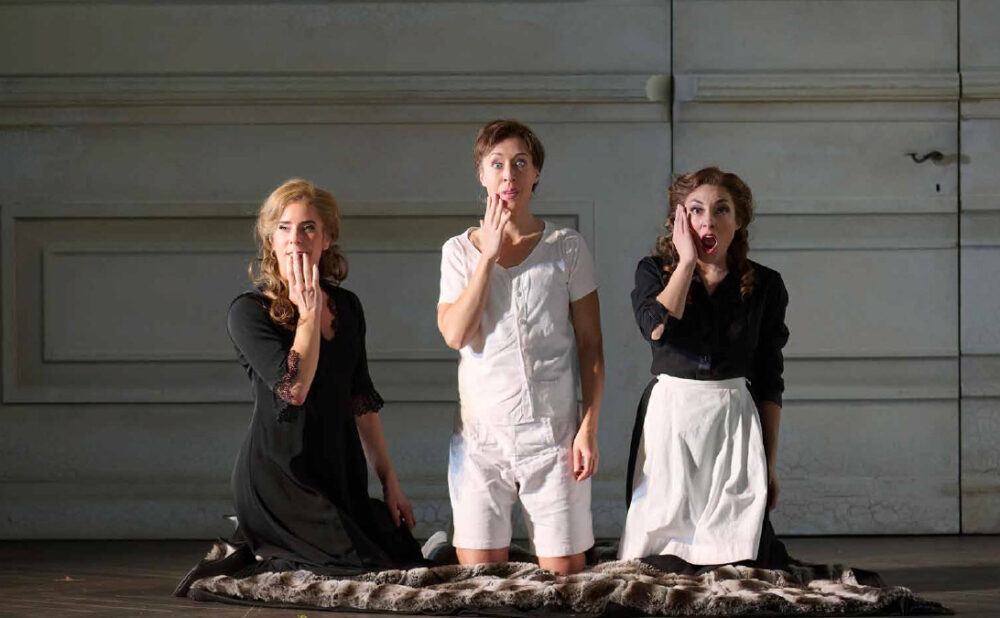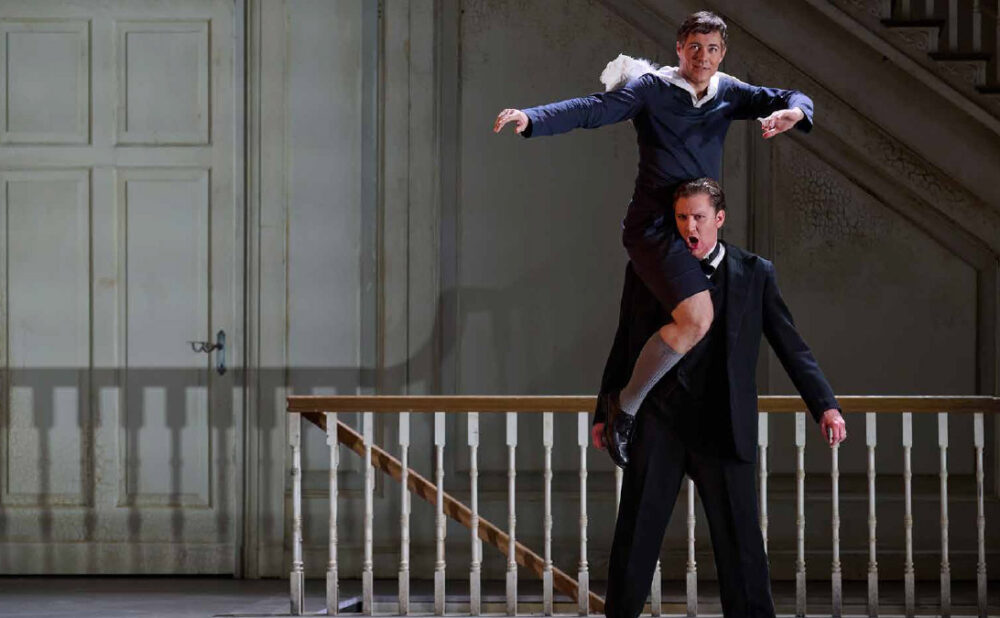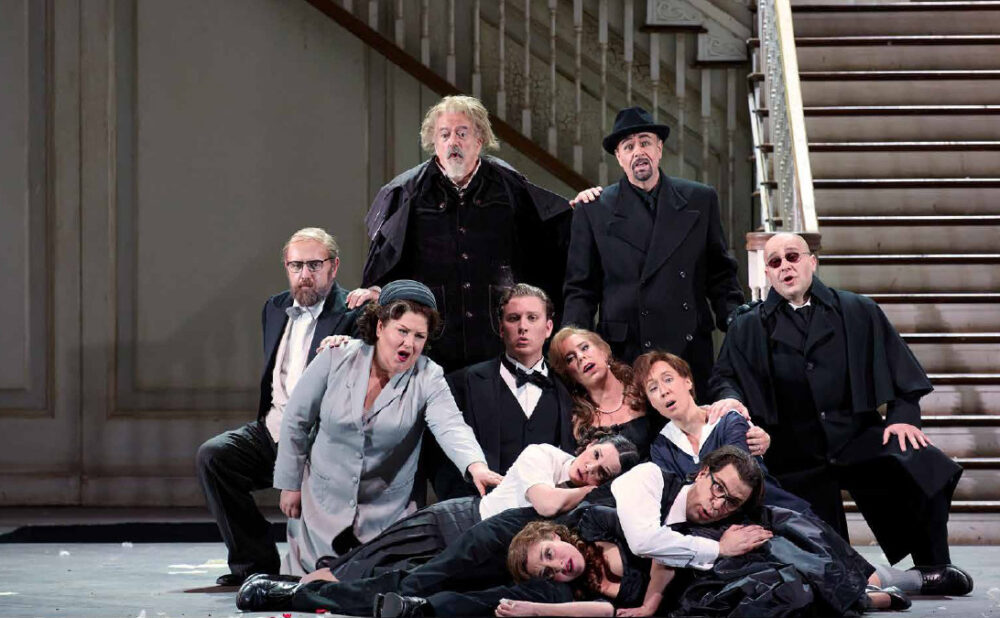COC’s psychological The Marriage of Figaro elevated by a sublime cast
Claus Guth offers a unique, if somewhat puzzling, take on Mozart’s masterstroke of a comic opera
What: The Marriage of Figaro
Where: Four Seasons Centre for the Performing Arts
When: Fri., Jan. 27 to Sat., Feb. 18
Highlight: Soprano Lauren Fagan’s achingly beautiful rendition of Dove Sono
Rating: NNNN (out of 5)
Why you should go: You’d be hard-pressed to find an ensemble more sublime than the one currently on stage at the Four Seasons Centre for the Performing Arts in Claus Guth’s physical, and psychological, take on Wolfgang Amadeus Mozart’s beloved The Marriage of Figaro.
Here’s the thing about opera: perhaps more so than any other discipline in the performing arts, a strong cast can excuse almost any faults in a production.
Case in point: the Canadian Opera Company’s (COC) remount of The Marriage of Figaro.
You’d be hard-pressed to find an ensemble more sublime than the one currently on stage at the Four Seasons Centre for the Performing Arts in Claus Guth’s physical and psychological — if somewhat perplexing — take on Wolfgang Amadeus Mozart’s masterstroke of a comic opera.
Much has been written about Guth’s controversial production, which debuted at the Salzburg Festival in 2006 and was first presented by the COC in 2016. The German director’s daring interpretation of the frothy comedy, traditionally set in 18th century Seville, Spain, turns the opera on its head — both figuratively and, in the final act, quite literally with Christian Schmidt’s set — by presenting it as a psychological thriller with an almost ice-cold aesthetic.
For those unfamiliar with the story, Figaro is set in the household of the philandering Count Almaviva (Gordon Bintner). His valet, Figaro (Luca Pisaroni), is preparing to marry Susanna (Andrea Carroll), the Countess’s maid. But before they wed, the couple teams up with the Countess (Lauren Fagan) to put Almaviva in his place after his unwanted advances toward Susanna.
Traditionalists balked at Guth’s heavy-handed reinterpretation while others raved. I’m in neither extreme camp.
The production should be lauded for finding new dimensions to this oft-produced opera. It’s darker and grittier than most, offering a cerebral exploration of how love and attraction can overpower all sense and reason. At the same time, Guth and revival director Marcelo Buscaino successfully balance this added dramatic heft with the light humour inherent in Mozart’s score and Lorenzo da Ponte’s libretto.
Yet, there are moments when it’s clear that Guth has pushed his directorial vision too far, seemingly trying to fit a square into a circle. He invents a non-speaking character, Cherubim (a wily Uli Kirsch), who, through manipulating the other characters, represents the natural force of romantic desire. The role is a thoughtful addition to the proceedings but becomes far too overused to the point of distraction.
Further, while Guth’s production wants to repeatedly comment on how passion and desire cross social class, Schmidt’s costumes are frustratingly ambiguous — a pastiche of clothes, drawn from different eras, that make it difficult to delineate the characters’ social standings.
These aren’t minor missteps by any means and could have derailed any other production.
But not this one. And it’s fully thanks to the cast and the animated COC Orchestra, under the confident direction of conductor Harry Bicket.
The production’s flaws are washed aside when this ensemble delivers hit after hit after hit of some of Mozart’s greatest works: lyrical arias, brooding duets, sweeping quartets and tongue-twisting patter songs. This cast from tip to toe is — in a word — unmatched.
As Figaro, Pisaroni is a formidable actor with a warmly resonant tone. Opposite him, Carroll is exquisite as Susanna. Meanwhile, COC Ensemble Studio graduate Bintner has perhaps the most physical role. Carrying Kirsch’s Cherubim on his shoulders in one moment and sliding on the floor in the next, all while singing “Hai già vinta la causa,” Bintner is a bulwark of a baritone with a rich, grounded tone.
Emily Fons, reprising her role from the 2016 production as the young page Cherubino, also deserves praise. She perfectly captures the character’s naivety and boyish tendencies in the trouser role, and her bell-like voice drew sustained applause on opening night after her second act aria, Voi che sapete.
But the standout among the astonishingly talented group of performers is Fagan, who so wholly captures the essence of the Countess, drawn between the pain of betrayal and also her own desires. When Fagan sings, it’s as if time stops. Her rendition of Dove sono, delivered while lying on the steps of the estate’s main hall, is achingly beautiful, imbued with pain and anger.
It’s in these moments when you are transported away from the hulking frame that the director has constructed around this Figaro. While Guth attempts to demonstrate the power of desire to overcome any moral reason, it’s the cast at the centre of this production that proves the power of the human voice can overcome any faults in a problematic production.








